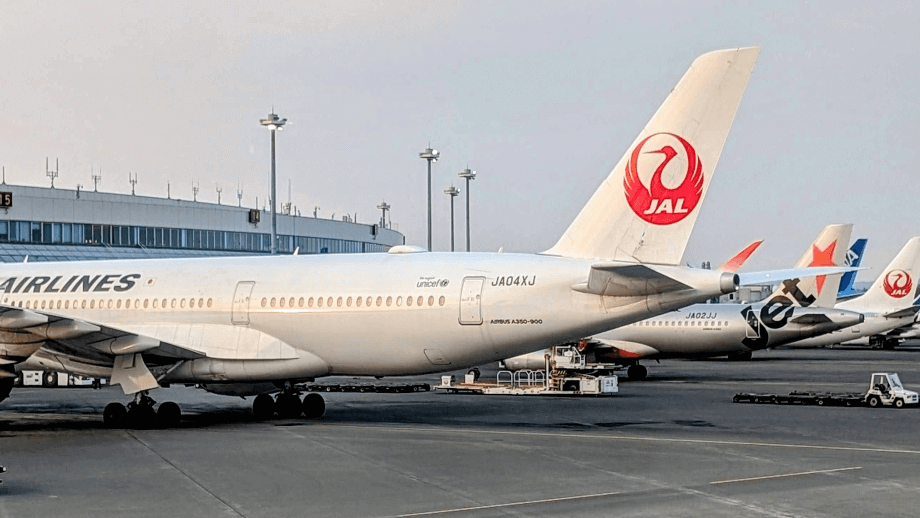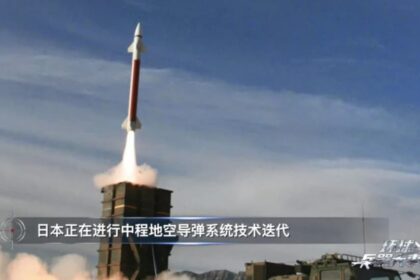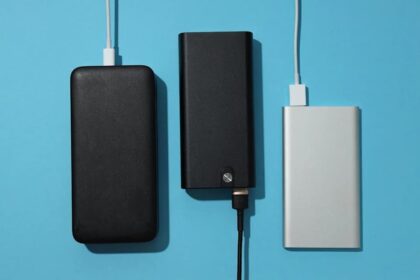Japan’s New Power Bank Rules: A Response to Rising In-Flight Fire Risks
Starting July 8, 2025, Japan will enforce new regulations requiring all air passengers on Japanese airlines to keep their power banks in plain sight and out of overhead compartments. This move, announced by Japan’s Ministry of Land, Infrastructure, Transport and Tourism (MLIT), is part of a growing global trend to address the increasing risk of fires caused by lithium-ion batteries during flights. The new rules apply to all 23 Japan-based airlines, including major carriers like All Nippon Airways (ANA) and Japan Airlines (JAL), and are designed to ensure that cabin crew can quickly detect and respond to any signs of battery malfunction.
- Japan’s New Power Bank Rules: A Response to Rising In-Flight Fire Risks
- Why Are Power Banks a Safety Concern on Airplanes?
- What Exactly Are Japan’s New Rules?
- What Prompted the Change? Recent Incidents and Global Trends
- How Do the New Rules Compare Internationally?
- What Are the Technical Limits and Why Do They Matter?
- How Will the Rules Be Enforced?
- What Should Travelers Do to Prepare?
- What Happens If a Battery Catches Fire Onboard?
- What’s Next for Airline Battery Safety?
- In Summary
Power banks—portable battery packs used to charge smartphones and other devices—have become essential travel accessories. However, their lithium-ion cells can overheat, catch fire, or even explode if damaged, overcharged, or manufactured poorly. Recent high-profile incidents have prompted aviation authorities worldwide to tighten regulations, and Japan’s new policy is the latest in a series of international safety measures.
Why Are Power Banks a Safety Concern on Airplanes?
Lithium-ion batteries, the technology behind most power banks, are prized for their high energy density and rechargeability. But this same energy density makes them susceptible to a phenomenon known as “thermal runaway.” If a battery cell is damaged, short-circuited, or exposed to excessive heat, it can rapidly overheat, emit smoke, or ignite. In the confined environment of an airplane cabin, even a small fire can pose a serious threat to passenger safety.
According to the U.S. Federal Aviation Administration (FAA), incidents involving lithium batteries on planes have been rising. In 2024 alone, the FAA recorded 81 lithium-battery events—an average of 1.6 per week—compared to just 32 in 2016. Portable chargers (power banks) are the most common culprits, followed by e-cigarettes and other battery-powered devices.
International aviation rules already prohibit lithium-ion batteries in checked baggage, as a fire in the cargo hold could go undetected until it becomes critical. The new focus is on the cabin, where quick detection and intervention are possible if batteries are kept within sight.
What Exactly Are Japan’s New Rules?
Under the new regulations, passengers on all Japanese airlines must:
- Keep power banks on their person or in an easily accessible location, such as a seat pocket or lap, throughout the flight.
- Not store power banks in overhead compartments or checked baggage under any circumstances.
- Charge devices only in locations where the power bank can be monitored by cabin crew.
- Carry a maximum of two power banks rated between 100 and 160 watt-hours (Wh) each. Devices exceeding 160Wh are strictly banned.
- Ensure that all power banks are undamaged and, where applicable, certified by relevant safety authorities.
While the new rule is not legally binding, airlines are working closely with the transport ministry to ensure maximum compliance. Passengers will be informed of the rules during ticket booking, check-in, and boarding, and cabin crew will be trained to enforce the policy during flights.
What Prompted the Change? Recent Incidents and Global Trends
The catalyst for Japan’s new regulation was a series of in-flight fires and smoke incidents linked to power banks. In January 2025, a fire broke out on an Air Busan plane at South Korea’s Gimhae International Airport, injuring several people and leading to the evacuation of all passengers and crew. Investigators found the charred remains of a power bank near the rear luggage compartment, and the incident prompted South Korea to ban power banks from overhead bins and require passengers to keep them within reach at all times.
Other notable incidents include:
- February 2025: Smoke filled the cabin of a Batik Air flight en route to Bangkok, reportedly from a burning power bank. No injuries were reported, but the event highlighted the risks.
- April 2025: A Hawaiian Airlines flight from Honolulu to Tokyo made an emergency landing after a power bank fire onboard. Quick action by cabin crew prevented serious harm.
- Multiple incidents in the U.S.: The FAA has documented dozens of cases where portable batteries overheated or caught fire, sometimes requiring emergency landings or diversions.
These events have led to a wave of regulatory changes across Asia and beyond. South Korea, Singapore, Malaysia, China, and several other countries have introduced similar bans or restrictions on power bank storage and use during flights. Airlines such as Singapore Airlines, Scoot, Thai Airways, AirAsia, Cathay Pacific, and Southwest Airlines have all updated their policies in 2024 and 2025 to address the growing risk.
How Do the New Rules Compare Internationally?
Japan’s new policy aligns closely with international aviation safety standards set by organizations like the International Civil Aviation Organization (ICAO) and the International Air Transport Association (IATA). Here’s how Japan’s rules compare to those in other countries:
- United States: The FAA requires all lithium-ion batteries, including power banks, to be carried in hand luggage. Devices over 160Wh are banned, and crew are trained to identify non-compliant batteries.
- Canada: Transport Canada enforces similar guidelines, with strict limits on battery capacity and a ban on checked-in lithium batteries.
- South Korea: After the Air Busan incident, all airlines require passengers to keep power banks on their person and out of overhead bins.
- Singapore: Singapore Airlines and Scoot have banned the use and charging of power banks during flights since April 2025.
- China: The Civil Aviation Administration of China (CAAC) now prohibits uncertified power banks and those subject to recalls. Charging devices with power banks onboard has been banned since 2014.
- Europe: Rules vary, but many airlines require passengers to remove lithium batteries from devices before storing bags overhead. Ryanair, for example, enforces this policy strictly.
Japan’s move is part of a broader international effort to harmonize safety standards and reduce confusion for travelers flying between countries with different rules.
What Are the Technical Limits and Why Do They Matter?
The new Japanese regulations specify that passengers may carry up to two power banks, each rated between 100Wh and 160Wh. Devices exceeding 160Wh are banned. But what do these numbers mean?
Watt-hours (Wh) measure the total energy capacity of a battery. Most consumer power banks are well below 100Wh, but high-capacity models designed for laptops or multiple devices can approach or exceed this limit. The restrictions are based on the potential fire risk: higher-capacity batteries contain more energy and, if they malfunction, can cause more severe fires.
To check your power bank’s rating, look for a label on the device. If it’s not marked, or if the label is faded or illegible, you may be denied boarding or have the device confiscated. Some countries, like China, require a specific safety certification mark (the China Compulsory Certification, or CCC) for all power banks brought onboard.
How Will the Rules Be Enforced?
Japanese airlines are updating their digital systems, check-in kiosks, and inflight safety briefings to inform passengers of the new rules. Ground staff at airports are being trained to spot non-compliant devices, and signage is being installed at boarding gates and baggage counters. Some airlines are considering special stickers or tags for approved power banks to speed up security checks.
During the flight, cabin crew will monitor passengers to ensure that power banks are not stored in overhead bins and that any charging activity is supervised. Passengers who violate the rules may face confiscation of their devices, denied boarding, or even fines, depending on the airline’s policy and the severity of the infraction. In extreme cases, flights could be delayed for onboard inspections or fire risk assessments.
What Should Travelers Do to Prepare?
For travelers flying to, from, or within Japan, and increasingly around the world, it’s essential to:
- Check the watt-hour rating of your power bank before packing.
- Ensure your device is undamaged and, if required, certified by relevant authorities.
- Pack power banks in your carry-on bag, but not in the overhead compartment.
- Keep power banks within reach and under observation during the flight.
- Monitor all charging activity and report any signs of overheating or malfunction to cabin crew immediately.
- Stay informed about the latest airline and government rules, as regulations can change quickly.
Travelers should also be aware that rules may differ between airlines and countries. If in doubt, check with your airline and the airports you’ll be passing through before your trip.
What Happens If a Battery Catches Fire Onboard?
While fires caused by lithium-ion batteries are rare, flight crews are trained to handle such emergencies. If a device starts to overheat or emit smoke, passengers should alert the crew immediately. Cabin crew can place the device in a thermal containment bag or submerge it in water to prevent the fire from spreading. These procedures are designed to minimize disruption and ensure the safety of everyone onboard.
Keith Tonkin, managing director of Aviation Projects, an aviation consulting company, explains:
“Fires in plane cabins that are caused by lithium-ion batteries are rarely deadly, and flight crews are generally well prepared to deal with them.”
Most incidents are resolved quickly, but the potential for serious harm means that prevention—through strict regulation and passenger awareness—is the top priority.
What’s Next for Airline Battery Safety?
As more passengers travel with multiple electronic devices, aviation authorities are likely to revisit and expand existing policies. Innovations in battery technology, such as the development of solid-state batteries, may eventually change safety standards. For now, the focus remains on education, enforcement, and harmonization of rules across borders.
Some airports are already trialing specialized battery scanning technologies, and future regulations may require passengers to declare all electronic devices or present safety certifications for high-capacity batteries. The aviation industry is also investing in joint communication campaigns to educate travelers, especially during peak travel seasons.
In Summary
- Japan will ban the storage of power banks in overhead compartments on all domestic and international flights operated by Japanese airlines starting July 8, 2025.
- Passengers must keep power banks within sight and under supervision, and may only carry two devices rated between 100Wh and 160Wh each.
- The new rules are a response to a rise in in-flight fires and smoke incidents linked to lithium-ion batteries, particularly power banks.
- Similar regulations have been adopted in South Korea, Singapore, China, the U.S., and other countries, reflecting a global trend toward stricter battery safety standards.
- Travelers should check their devices’ ratings, pack them in carry-on bags (not overhead bins), and monitor them during flights.
- Flight crews are trained to handle battery fires, but prevention and early detection are key to passenger safety.
- As technology and travel habits evolve, further changes to airline battery regulations are likely in the coming years.












